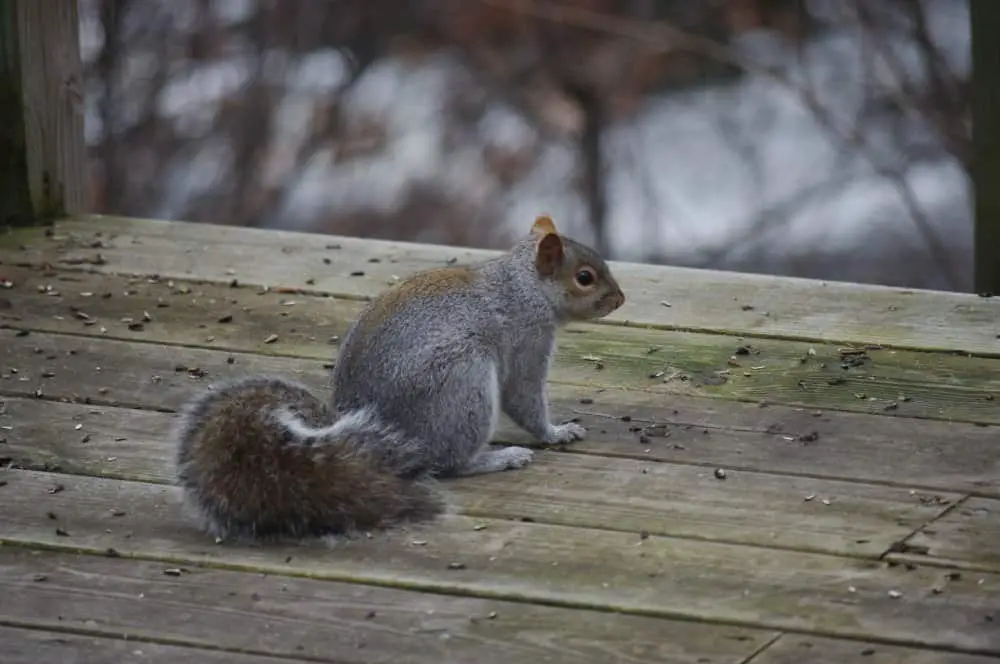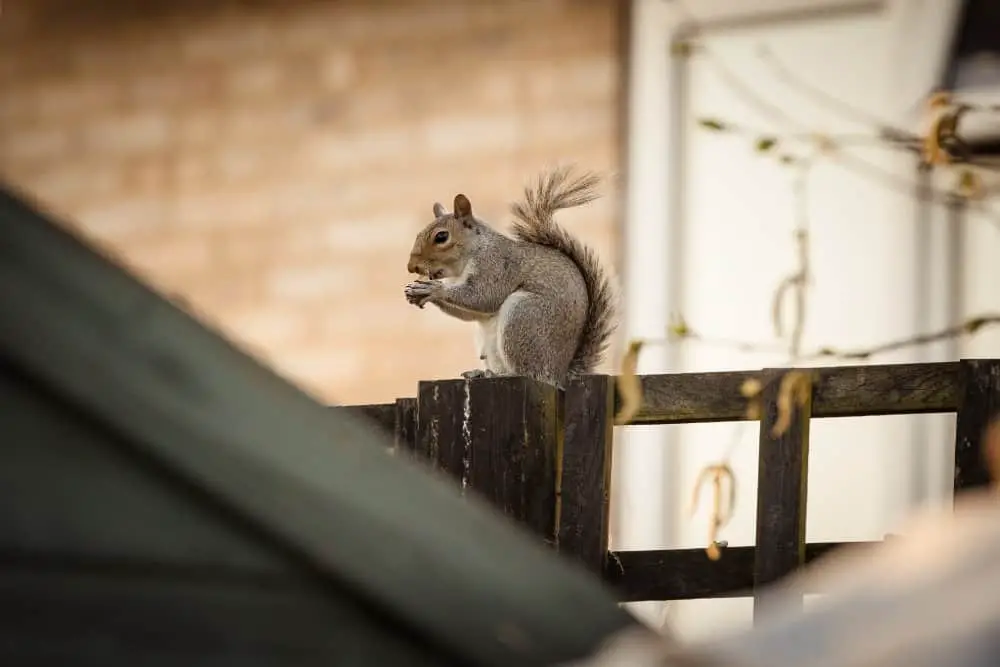Discovering a squirrel hole in your home or property can be a nuisance, posing potential risks for structural damage and unwanted critters taking up residence.
One of the key factors in addressing squirrel holes efficiently is determining the optimal time to seal them up.
While squirrels may be cute and entertaining to watch, their presence in attics, walls, and crawl spaces can cause serious damage to insulation and wiring, alongside creating noise disturbances.
To prevent these problems from spiraling, having a proper understanding of the seasonal behavior of squirrels and their nesting patterns is crucial in deciding the best time to seal their entry and exit points.
Taking into account the common times when squirrels are most active in building nests and seeking shelter, homeowners can effectively prioritize sealing the squirrel holes, minimizing both disturbance to the animals and the chances of re-infestation.
Identifying Squirrel Entry Points
Squirrel Infestation Signs
It is essential to first identify signs of squirrel infestations in your home before sealing any holes. Squirrels are notorious for causing damage to roofs, attics, and walls, so being vigilant is crucial. Here are some common squirrel infestation signs:
- Scratching noises: You might hear scratching, gnawing, or scampering sounds in the walls or attic, especially during early morning or late evening hours.
- Nests: Squirrels tend to create nests using leaves and twigs. Keep an eye for any nests in your attic or roof spaces.
- Droppings: Squirrel droppings resemble small, dark brown pellets. They can often be found in attics or near potential entry points.
- Damage: Look for damage signs like chewed wires, gnawed insulation, or scattered debris caused by their nesting activities.
Locating Entry Points
After identifying possible squirrel infestations, it’s time to locate their entry points. Sealing these holes can prevent further damage to your home. Here’s how to find squirrel entry points:
- Roof: Inspect your roof’s shingles, eaves, vents, and flashing for any signs of damage. Squirrels are excellent climbers, and they might exploit loose shingles or roof edges to gain access to your attic.
- Vents: Check for any damage or gaps in your home’s vents, including ridge vents, gable vents, or soffit vents. Squirrels can chew through vent covers and use these openings as entry points.
- Walls: Examine the exterior of your home for holes or gaps in siding, cracks in bricks or foundation, or damage around utility lines. These areas provide squirrels with access to your walls or attic.
- Trees: Observe if any tree branches come too close to your roof or walls. Squirrels often use tree limbs to enter your home, so trimming back branches can help deter them.
Best Time to Seal Squirrel Holes

Seasonal Considerations
The best time to seal squirrel holes is usually during the middle of fall. During this time, squirrels are less active in the attic, and it’s safer to repair their entry points.
It is not advised to seal holes in the winter or during the active squirrel breeding seasons, as this could trap baby squirrels inside your home and cause more damage. However, keep in mind that seasonal activity may vary depending on your climate and the squirrel species.
Optimal Weather Conditions
When looking for the optimal weather conditions, it’s essential to consider the temperature and overall climate. Repairing and sealing squirrel holes should be done during good weather, preferably when temperatures are above 50°F (10°C). This will allow for proper curing of the sealing materials and help prevent condensation or moisture inside the sealed holes.
Additionally, sealing on a dry, sunny day will make the repair work more accessible.
Here are some quick tips for sealing squirrel holes during the best conditions:
- Choose a day with clear skies and low humidity.
- Avoid working in extreme temperatures, as it could affect the sealing materials.
- Monitor the local forecast to ensure good weather for the entire day or project duration.
Methods of Sealing Squirrel Holes
Materials and Tools
To effectively seal squirrel holes, you will need the appropriate materials and tools. Some useful materials include:
- Caulk: A flexible sealant used for filling gaps and cracks. It works well for small squirrel holes.
- Steel mesh: Also known as hardware cloth, this sturdy material is effective in covering larger openings and ensuring squirrels do not chew through it.
- Expanding foam: Good for filling larger gaps, but make sure it is pest resistant. Squirrels might still chew through it.
- Sheet metal: Durable and chew-proof, sheet metal can be used to cover and seal larger holes or areas where squirrels have been chewing.
- Chicken wire: A more affordable alternative to steel mesh but less effective in preventing squirrels from chewing through it.
- Steel wool: Can be used in combination with other sealing materials to enhance their effectiveness.
You will also need essential tools like:
- Hammer
- Screwdriver
- Wire cutters
- Pliers
Sealing Techniques
There are several techniques to seal squirrel holes, depending on the size of the hole and the materials being used:
- Caulk: For small squirrel holes, apply caulk around the edges of the hole and fill the gap completely, smoothing it over the surface. Be sure that you are using a caulk or sealant designed specifically to resist pest activity.
- Mesh: For sizable holes and high-risk areas, cut hardware cloth or steel mesh to size and use it to cover the hole. Secure the mesh using screws or staples, ensuring it is flat and tightly affixed to the surface.
- Expanding foam: Fill the hole with expanding foam, keeping in mind that it will expand. Trim the excess foam once it has set, and consider combining it with mesh or steel wool for added protection against chewing.
- Sheet metal: When using sheet metal for a large opening or against determined chewers, cut the metal to fit the surface, then secure it in place using screws or nails. Be sure to wear gloves and use caution when handling the sharp edges of the sheet metal.
- Chicken wire: For an affordable option, attach chicken wire to the surface around the hole, making sure it’s tight using a staple gun or screws. However, note that it may not be as effective against persistent chewers.
- Steel wool: Stuff steel wool into the hole and add caulk or expandable foam around it to create a barrier. This combination provides an extra layer of protection against squirrels chewing through the seal.
Squirrel-Proofing Your Home
Preventative Measures
To avoid squirrel infestations, it’s essential to take preventive measures. Start by inspecting your home’s exterior, checking for any gaps or holes that could serve as entry points. This includes areas around vents, soffits, chimneys, and the roofline. Seal any weak spots with high-quality materials to prevent squirrels from entering your living space.
Additionally, store bird seed in secure, airtight containers, as bird feeders can attract squirrels to your yard. To further deter these pests, consider using squirrel-proof bird feeders, as they have mechanisms that prevent squirrels from accessing the food.
Dealing with Trees and Yard

Since squirrels usually gain access to your home by jumping from trees or other structures, trimming tree branches and vegetation away from your house can go a long way in preventing squirrel problems. Maintain a distance of at least 6 feet between any tree branches and your home’s exterior.
Your yard plays a significant role in keeping squirrels away from your home. Cleaning up debris, such as fallen branches and leaves, reduces hiding spots for these critters. Additionally, consider installing metal collars around tree trunks to prevent squirrels from climbing.
To protect areas like garages, basements, crawl spaces, and siding, consider installing barriers like hardware cloth or metal flashing. This will prevent squirrels from gnawing on your property and causing damage.
Regarding trapped squirrels in attics, it is crucial to address this issue promptly as they can cause damage to wires, insulation, and other areas, potentially creating fire hazards. Moreover, if left unchecked, squirrel infestations can result in unpleasant odors due to their droppings and urine.
Safe Squirrel Removal Practices
Trapping and Relocation
Trapping and relocating squirrels is a common method used by homeowners. It involves setting a trap near the entry points or nests, where squirrels are likely to be present. Be aware of squirrel babies in the nest, as they will need to be relocated along with their parents.
- Use humane, live-catch traps for minimal trauma
- Check traps frequently to avoid unnecessary stress on captured squirrels
- Relocate trapped squirrels to a suitable location away from your property, preferably near trees with plenty of natural food sources
One-Way Doors
One-way doors are an effective and humane approach for evicting squirrels safely. These doors allow squirrels to exit their nest but prevent them from re-entering.
- Install a one-way door at the entry point of the squirrel’s nest
- Monitor the door to ensure all squirrels have left before sealing the entry point permanently
It is essential to keep in mind to properly seal the entry points after the squirrel removal process to avoid future invasions.
When to Call Professionals
While trapping and one-way doors are practical options for homeowners, certain instances may require professional assistance, such as:
- Inability to locate the nest or entry points
- Presence of multiple nests or a severe infestation
- Handling squirrel babies without causing harm
Hiring professionals experienced in squirrel removal can ensure the process is done safely and effectively without causing harm to the animals or your home.
Squirrel Deterrents and Repellents
One way to handle a squirrel problem is to prevent them from approaching your property or causing damage in the first place. There are various squirrel deterrents and repellents available, and these can be largely divided into two categories, natural repellents, and commercial solutions.
Natural Repellents
Natural repellents use materials and substances that are environmentally friendly and won’t harm the squirrels. Some common natural squirrel deterrents include:
- Noise: Squirrels are diurnal creatures, so using noise deterrents, such as wind chimes, during the day may scare them away.
- Spicy seeds: Mixing hot pepper, such as cayenne pepper, with bird seeds can make them unpalatable to squirrels while still attracting birds.
- Mothballs: Placing mothballs around your garden or attic can help keep squirrels at bay, as they dislike the smell.
Commercial Solutions
For a more powerful deterrent, there are various commercial products available. These solutions are typically stronger and more effective at repelling squirrels. Some popular options include:
- Repellent sprays: Squirrel repellent sprays can be applied to surfaces or objects that you want to protect from squirrels, such as plants or the entrance to your attic.
- Predator urine: Using predator urine, such as that from a fox or coyote, can scare squirrels away. You can find these in stores or online, and they can be applied around your property.
- Foam sealant: If you have identified a squirrel hole, one way to prevent further intrusion is by sealing it with a foam sealant. This can help keep squirrels out while also maintaining the structural integrity of your property.


